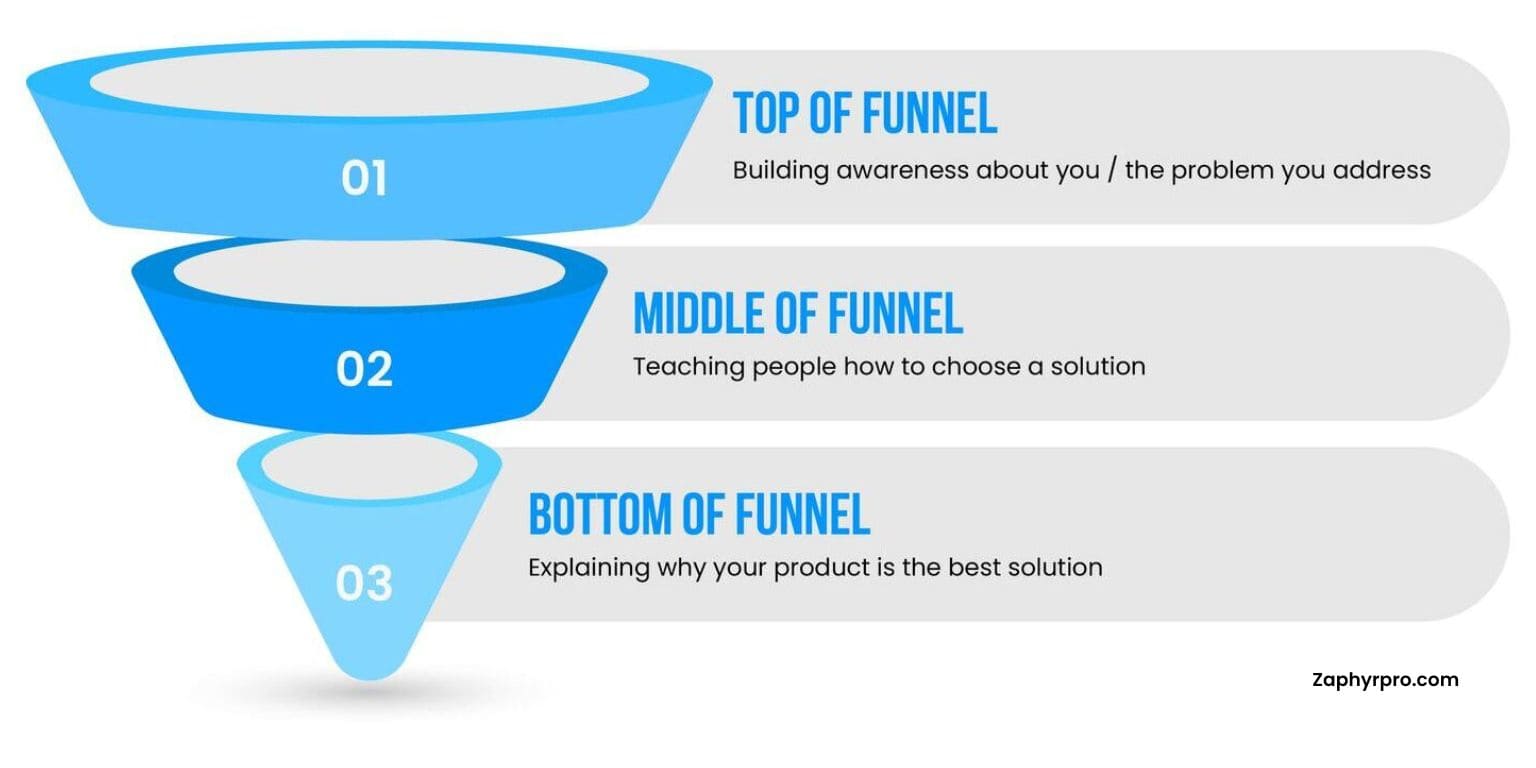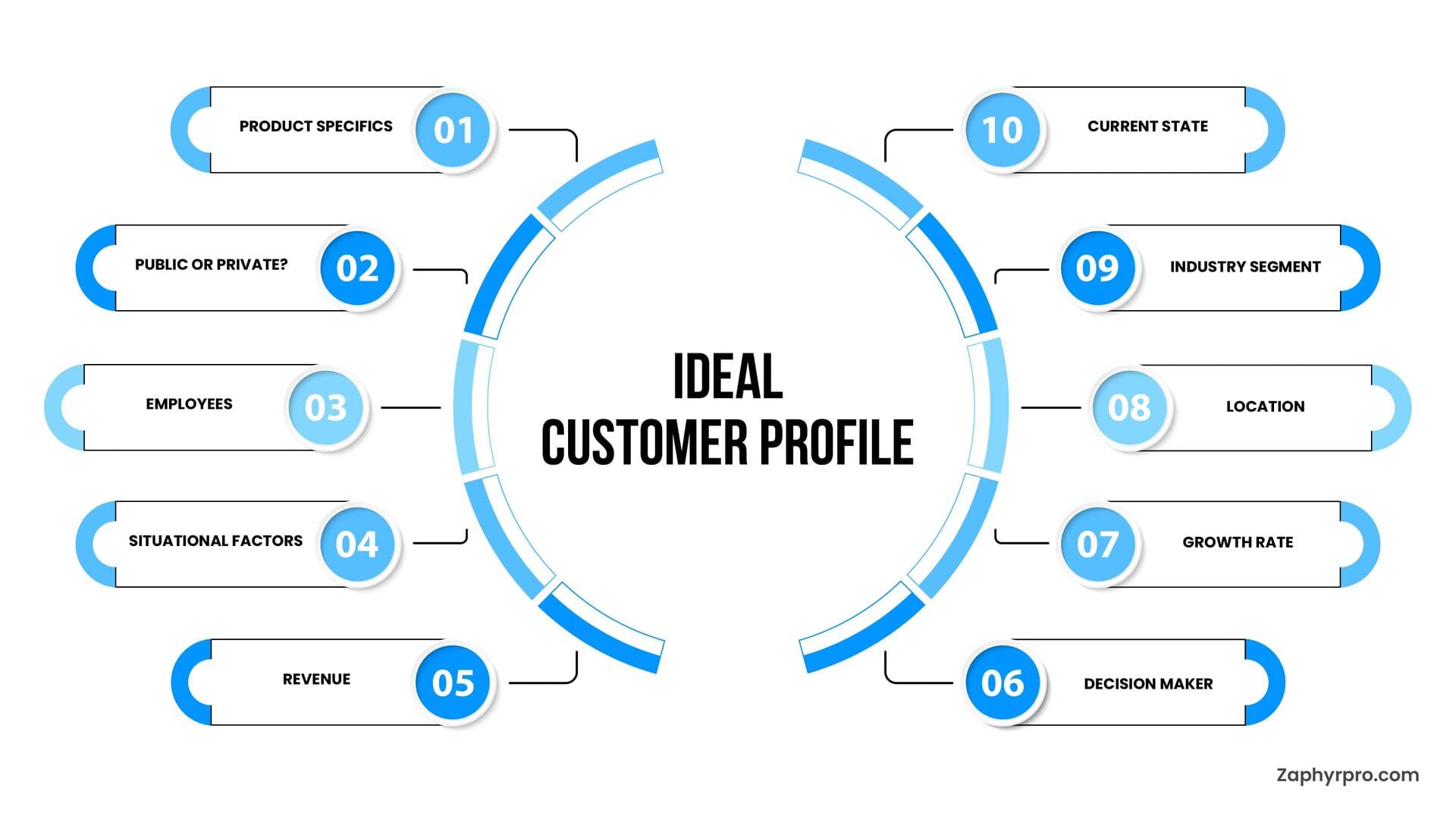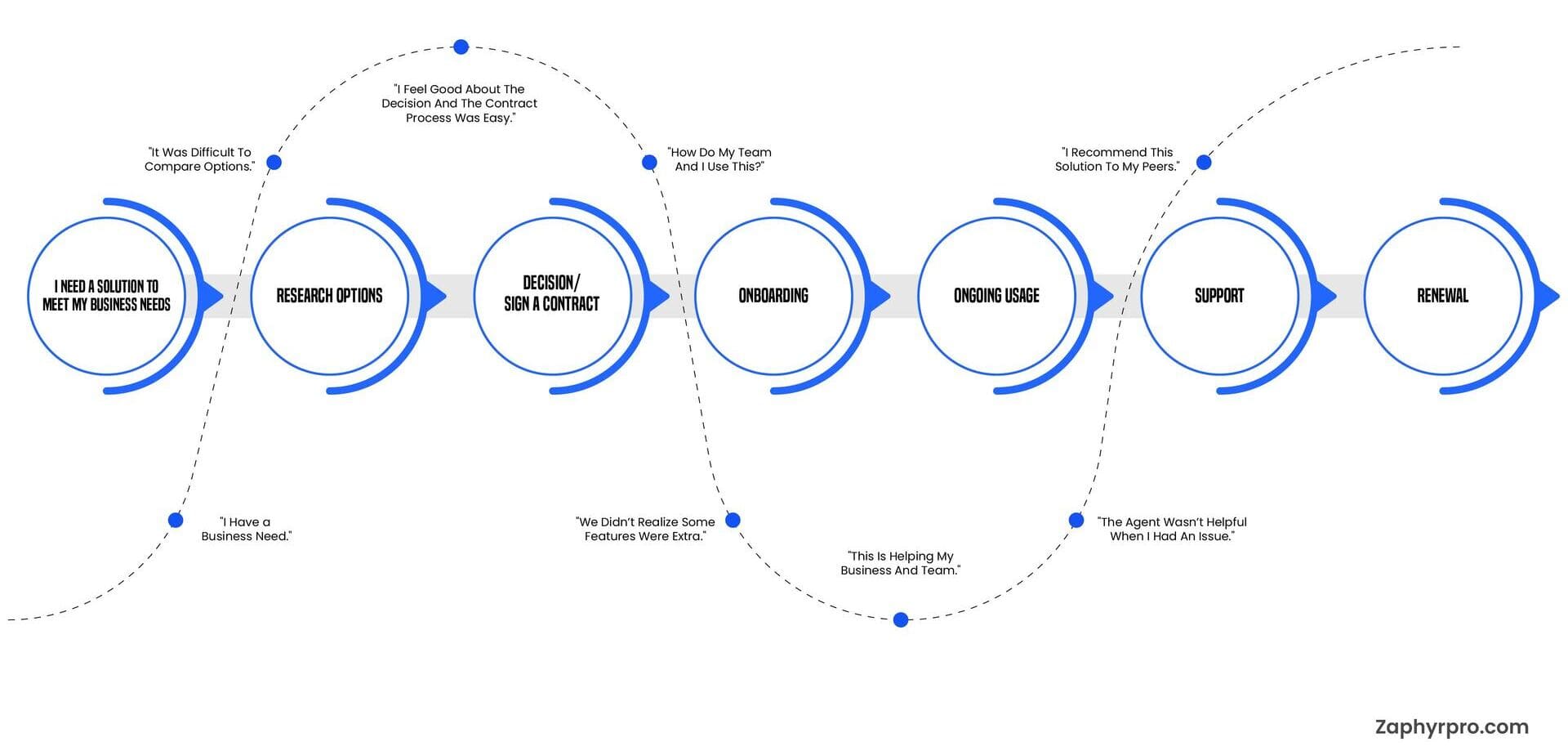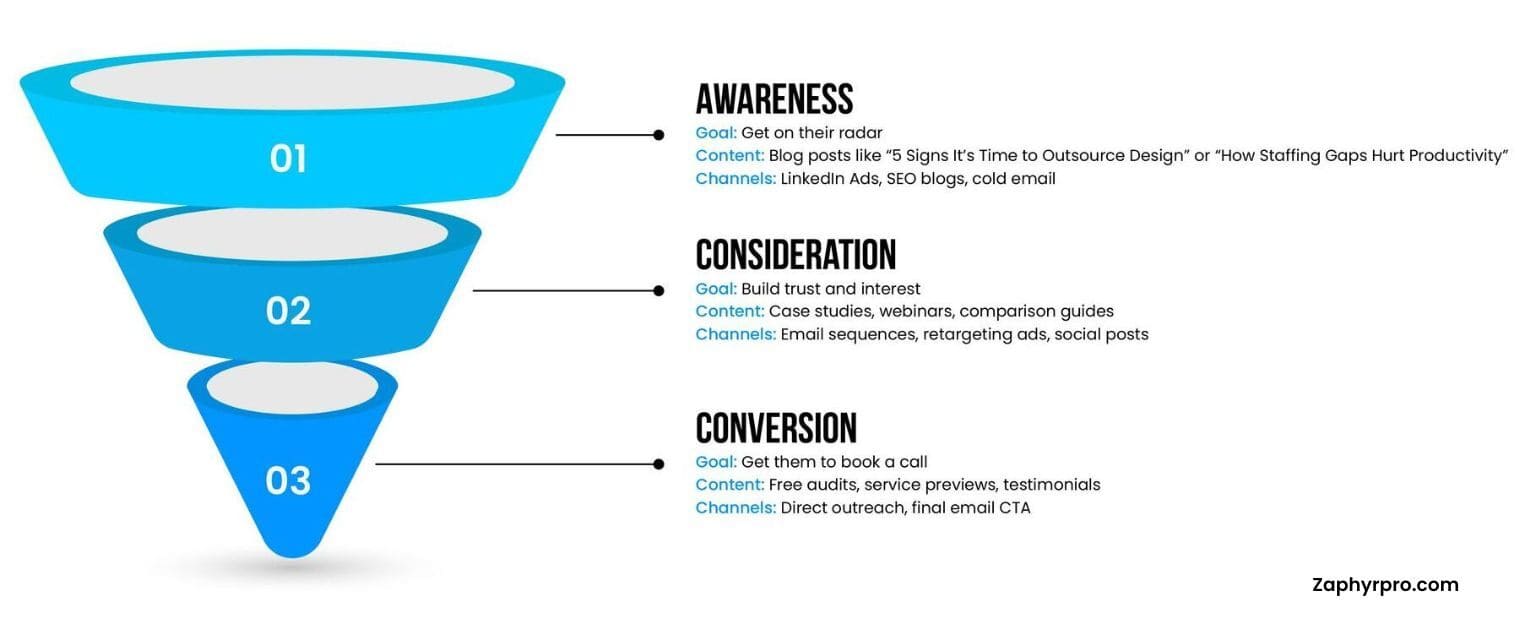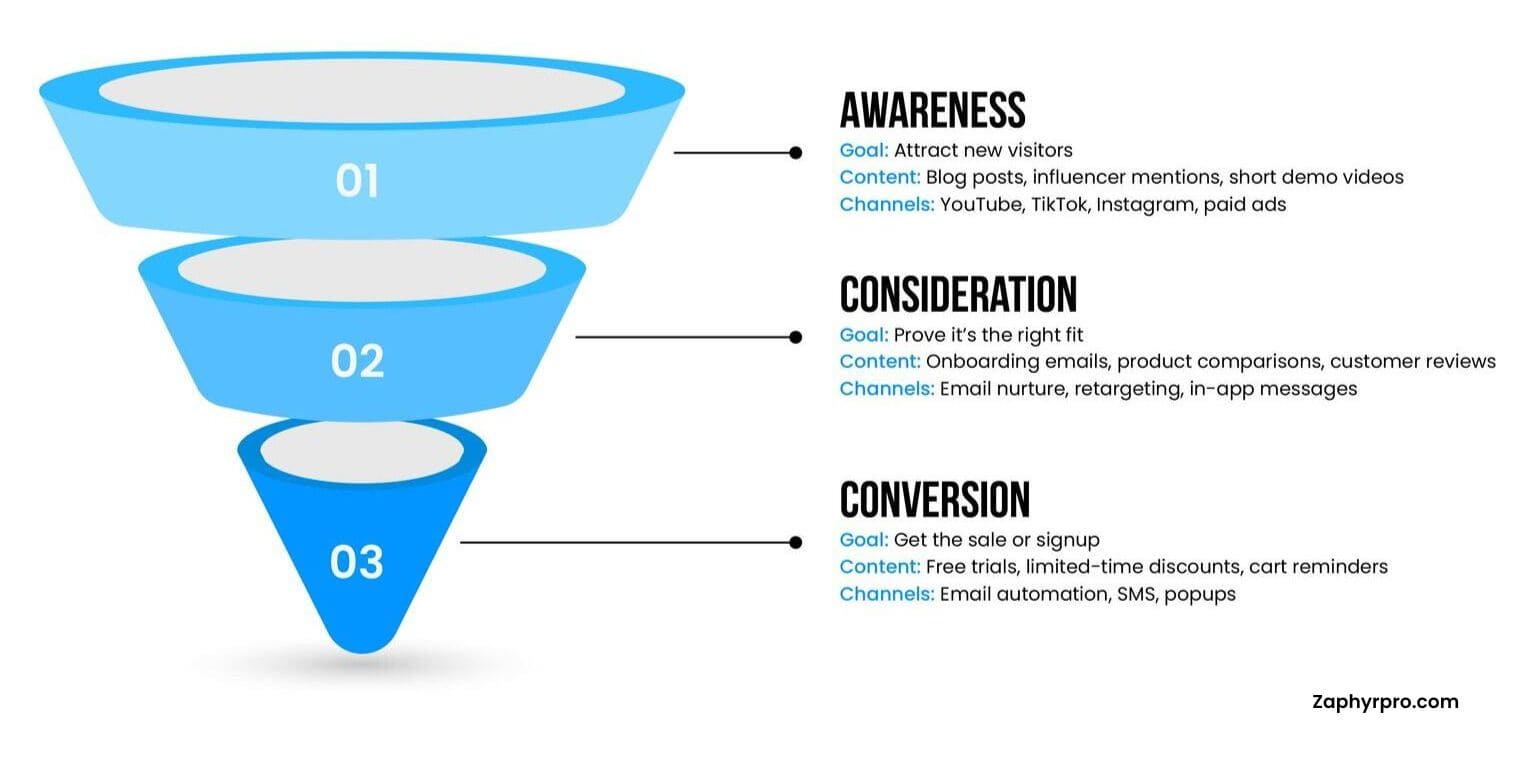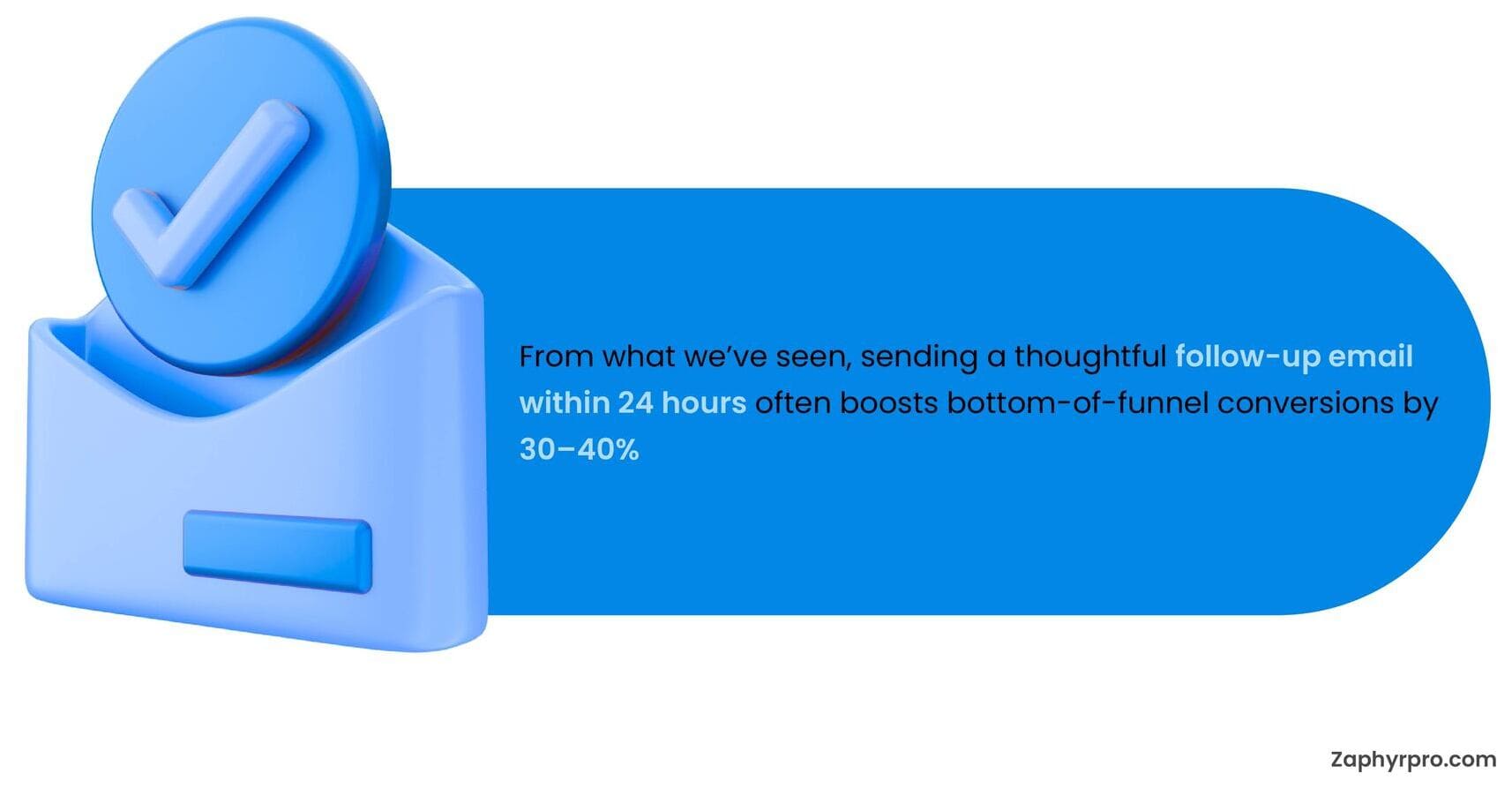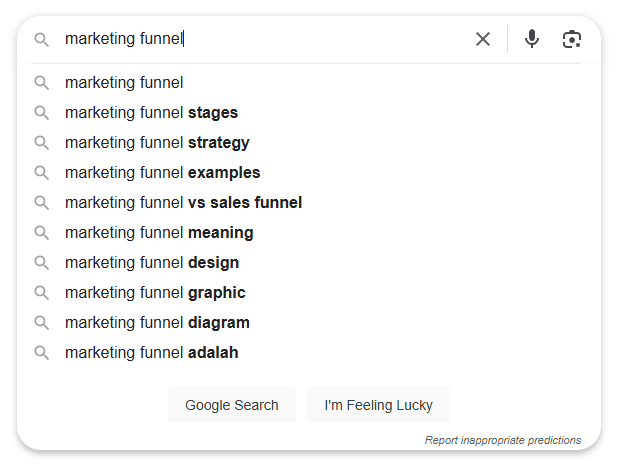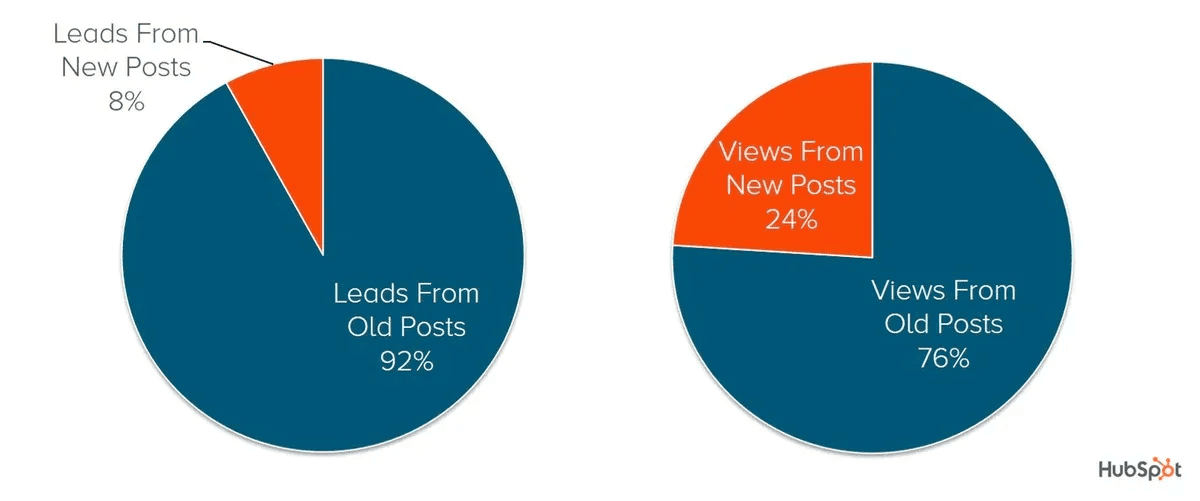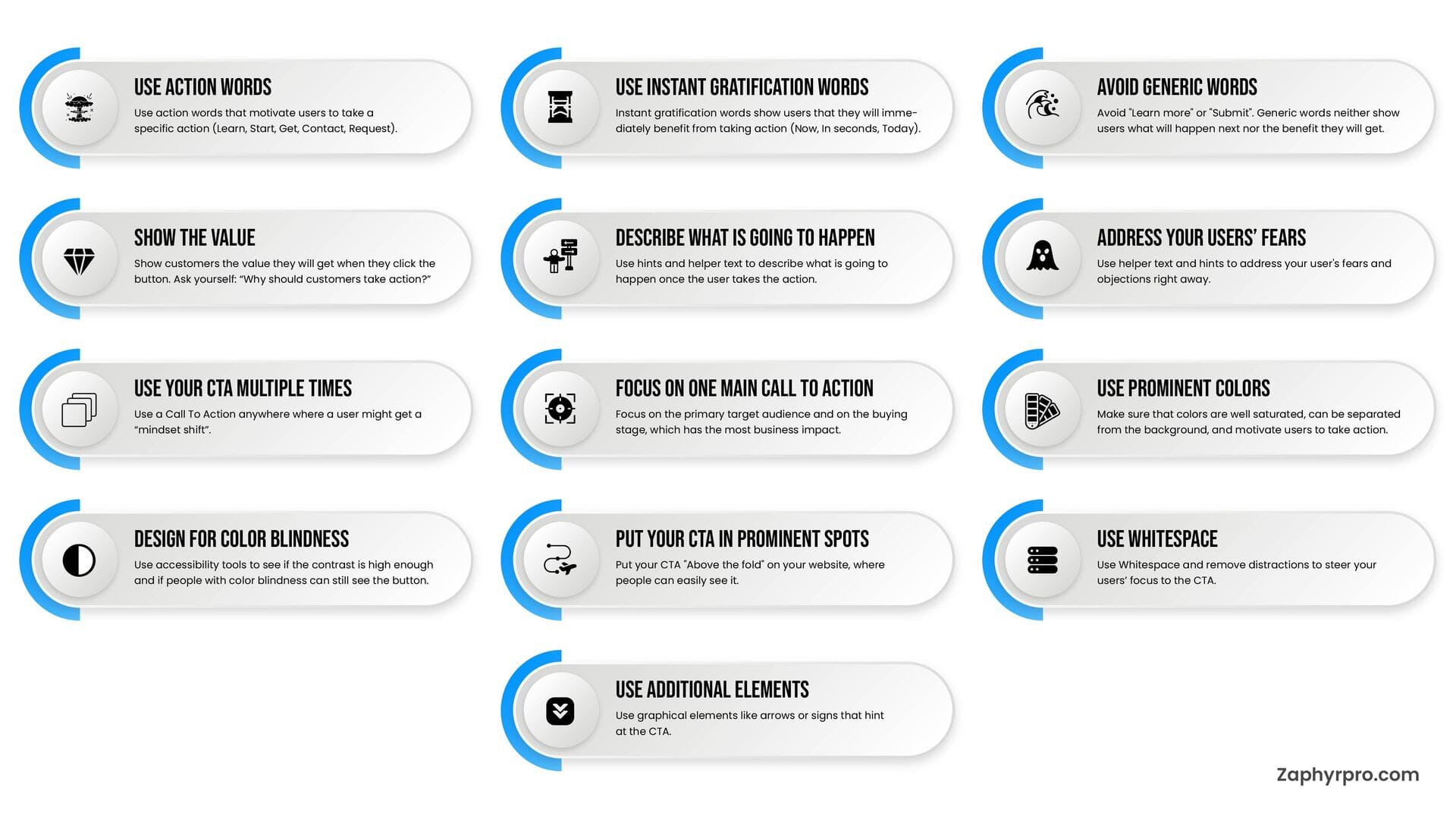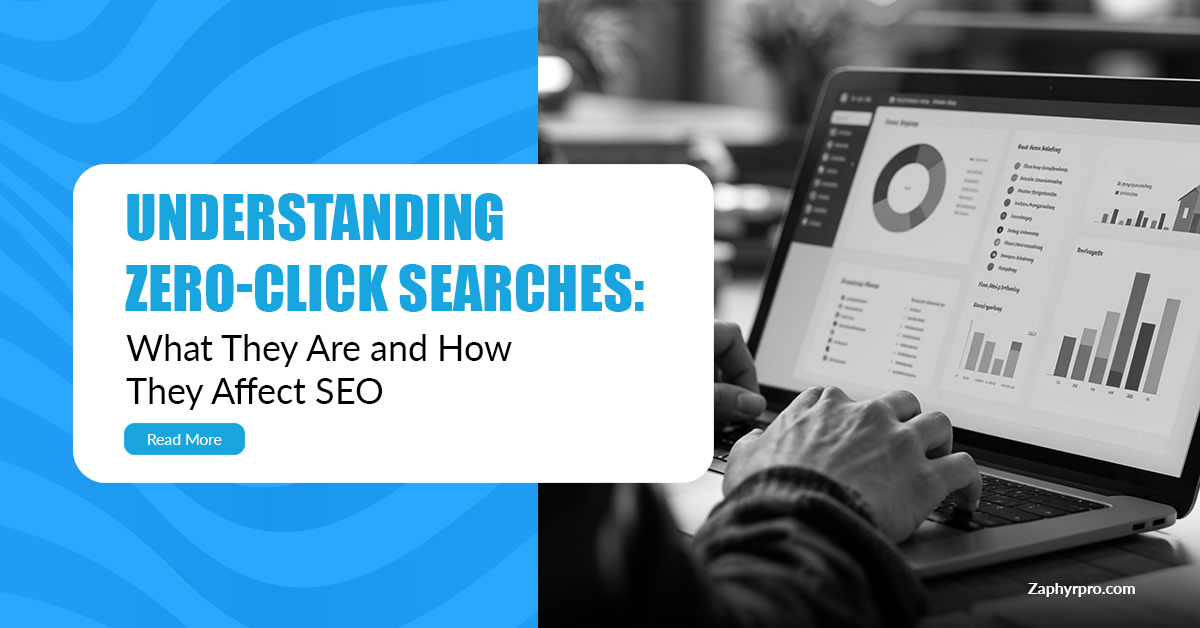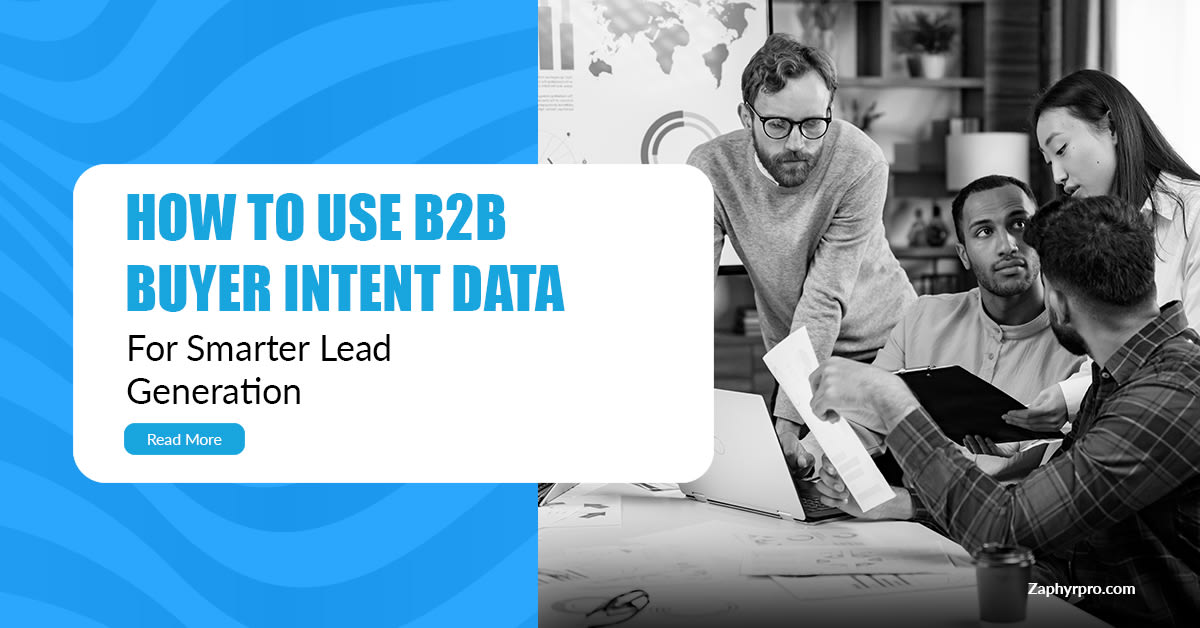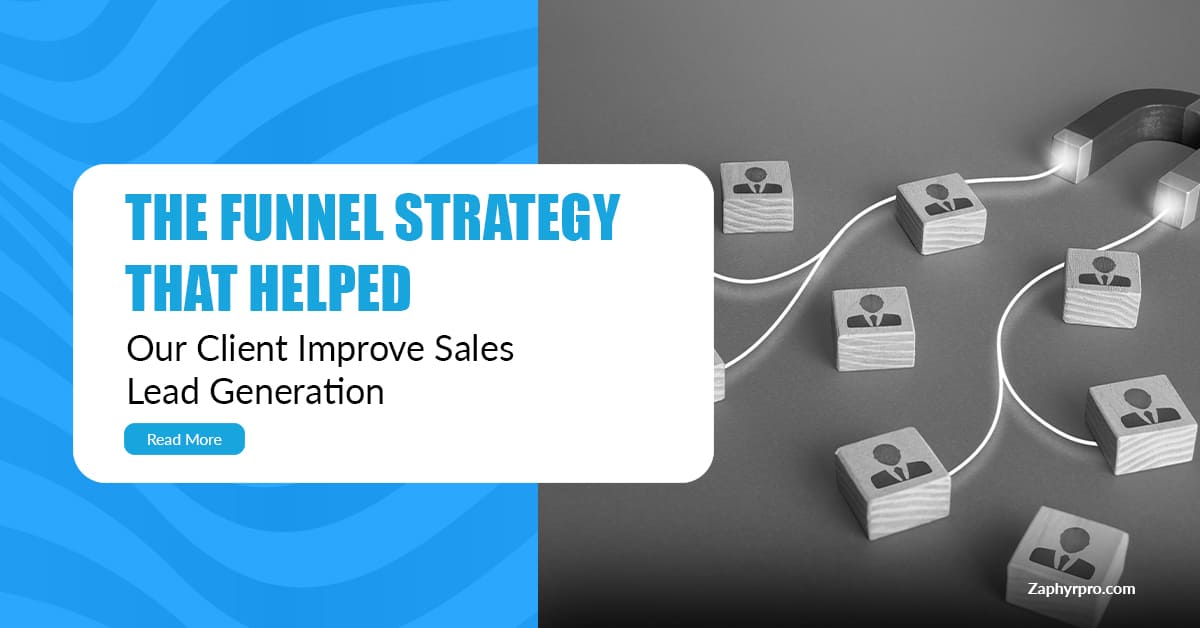Your marketing funnel isn’t working the way it should.
You’ve put in the time, spent the money, followed all the “expert” advice… but something still feels off.
The numbers aren’t great, people drop off halfway through, and you’re left wondering what you’re missing.
Turns out about 7 out of 10 businesses are dealing with the same thing. They can’t figure out why their funnels aren’t converting.
So what’s going wrong?
Well, the traditional marketing funnel — the one we’ve all been taught — might be part of the problem.
It’s kind of outdated.
And that’s exactly what HubSpot realized years ago.
Instead of sticking to the classic top-to-bottom funnel, they flipped the model on its side and introduced the flywheel, a system built around momentum, not just conversion.
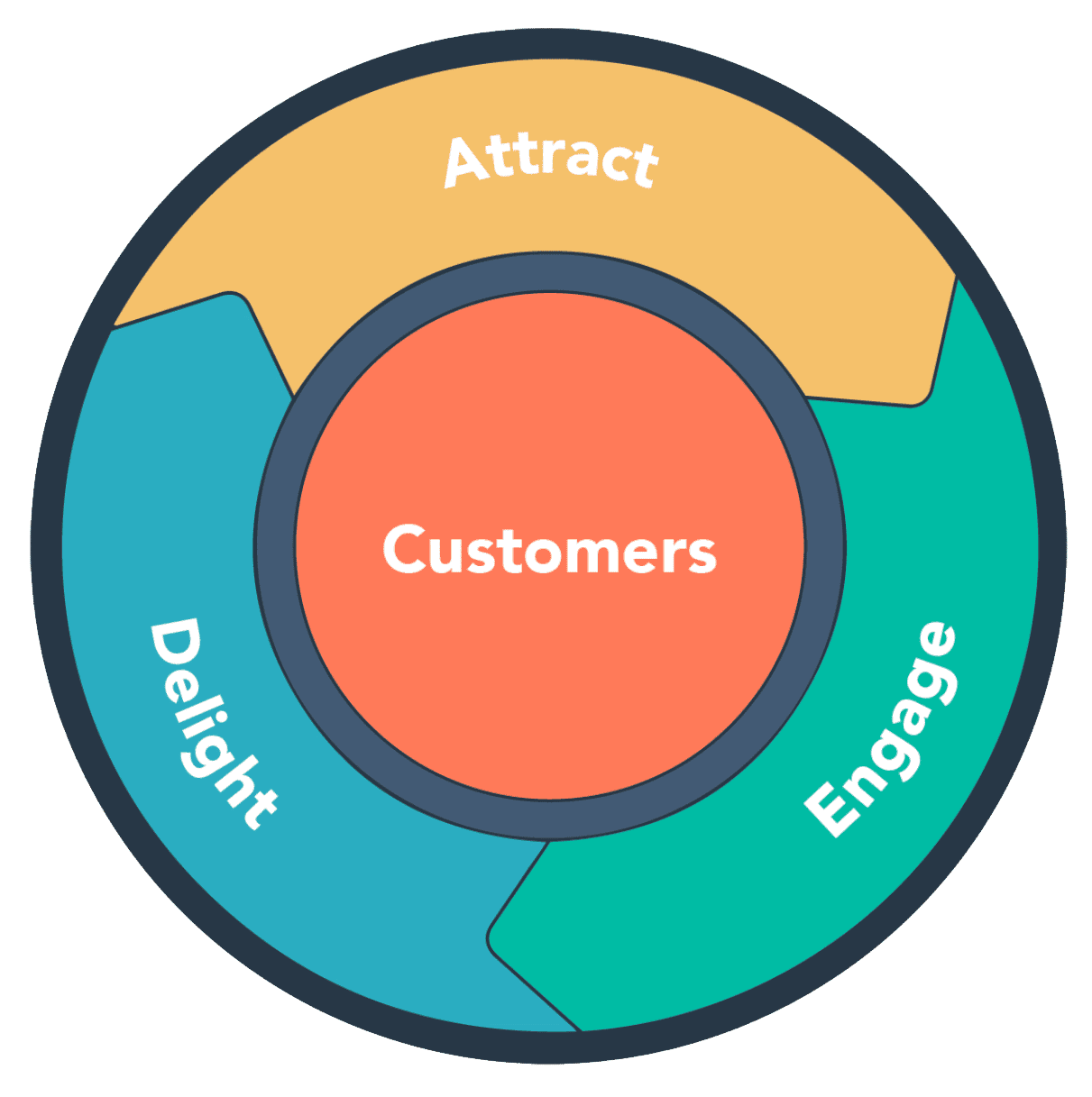
"Funnels lose their steam. With a flywheel, the customer is at the center and your business keeps spinning, growing faster as you reduce friction."
- Brian Halligan, HubSpot’s co-founder
Put simply, instead of losing leads at the bottom, they kept the momentum going, and used it to fuel growth.
That shift helped turn HubSpot into the multi-billion dollar brand it is today.
And it’s a good reminder:
Maybe your funnel isn’t broken.
Maybe it’s just time to think about it differently.
I’ve been there.
I spent years trying to fix a funnel that never really worked. Eventually, I stopped patching the old system and built something better.
And honestly? It changed everything.
In this article, I’ll show you how to do the same — how to build a simple, effective framework, whether you’re a team of 50 or flying solo.
What Is a Marketing Funnel? (And Why It’s Not Just a Buzzword)
A marketing funnel isn’t just some trendy term agencies throw around.
It’s a real system that helps you turn strangers into leads—and leads into paying clients.
Here’s the simplest way to explain it:
A marketing funnel is the step-by-step journey someone takes from first hearing about your business… to eventually buying from you.
Still feel a bit abstract? Think of it like dating.
You wouldn’t ask someone to marry you on the first date. You take your time… get to know each other, build trust, and then, when it feels right, you ask for a commitment.
A marketing funnel works the same way.
It helps you guide potential customers through each stage, giving them the right message at the right time, instead of jumping straight to the sale.
The 4 Basic Stages of a Marketing Funnel
Strategic marketing collateral for business plays a vital role in helping prospects better understand your offerings. Here are FOUR basic steps and stages of a marketing funnel:
- Awareness – They find out you exist. This could come from an ad, a post, a cold email, or a referral.
- Interest – They click around, read more, check out your site. They’re curious.
- Desire – They start to see the value. Maybe they compare you to other options.
- Action – They take the next step. Fill out a form, book a call, make a purchase.
If even one of these steps is missing or weak, you’ll feel fewer leads, slower sales, and more drop-offs.
The 3 Funnel Strategy: TOFU, MOFU, BOFU
Marketers also use this three-part model, and yes, the acronyms are odd, but they’re useful:
- TOFU (Top of Funnel) – This is how they discover you. Think ads, social posts, blogs, cold outreach.
- MOFU (Middle of Funnel) – They’re interested. Now give them more: case studies, webinars, product pages, obviously content that builds trust.
- BOFU (Bottom of Funnel) – They’re close to buying. This is where you share pricing, demos, testimonials or anything that helps them say yes.
When your funnel is built right, it works in the background 24/7, even when you’re not online.
Pro Tip:
Want to see this in action? Check out our outbound lead generation strategy, we use this exact framework to help clients book meetings every week.
How to Build an Effective Marketing Funnel (Step-by-Step)
You guide the right people through the right steps with the right message, until they’re ready to buy.
Sounds simple.
But actually doing it? That’s where most businesses get stuck.
Here’s a step-by-step breakdown to get it right from the start:
Step 1: Know Exactly Who You’re Talking To (Your ICP)
Before you build anything, get clear on your ideal customer. Who they are, what they need, what they’re struggling with, and what helps them make a decision.
Talk to your best customers. Ask your sales team. Use real conversations to shape your Ideal Customer Profile (ICP).
According to Google’s own Search Quality Guidelines, content based on real, first-hand experience is more trustworthy, and more likely to rank higher in search results.
In other words, companies that consistently use customer interviews in their marketing strategies see a 2x increase in conversion rates compared to those relying on assumptions.
Step 2: Map Out Their Journey
What happens between “I just found you” and “I’m ready to buy”? That’s your customer journey.
Figure out what they’re thinking, asking, or needing at each stage, so you can give them content that actually helps, not just sells.
This is where your funnel starts to take shape.
Step 3: Create the Right Content for Each Stage
Use the TOFU → MOFU → BOFU model to guide your messaging:
TOFU (Top of Funnel): Use blog posts, short videos, free guides—stuff that educates or entertains.
MOFU (Middle of Funnel): Share webinars, case studies, comparison pages—things that show your value.
BOFU (Bottom of Funnel): Help them take action → Demos, pricing, free trials, consultations—make it easy to say “yes.”
Big mistake to avoid:
Don’t send BOFU content to cold leads. That’s like asking someone to move in after one date.
Step 4: Get Sales and Marketing on the Same Page
Your funnel falls apart fast if sales and marketing aren’t working together.
Marketing warms up the leads. Sales closes the deal.
So both sides need to agree on:
- What a qualified lead looks like
- When to hand off the lead
- What success means
When everyone’s aligned? Conversions go up.
- As Jill Rowley incited:
"The new reality is that sales and marketing are continuously and increasingly integrated. Marketing needs to know more about sales, sales needs to know more about marketing, and we all need to know more about our customers."
Step 5: Track What’s Working (and Fix What’s Not)
Once your funnel is live, the work isn’t over.
Now it’s about watching what’s working, spotting what’s not, and making small changes that improve results.
Use tools that give you clear insights, not just more data.
Here are a few worth using:
HubSpot – Great for tracking leads, conversions, and what stage people are in
ActiveCampaign – Helpful for sending the right emails based on what people do
Segment – Useful for tracking the full customer journey across platforms
Microsoft Clarity – Lets you see how users behave on your site (scrolls, clicks, even frustration)
Meta Pixel & Google Ads Tag – Helps you retarget people who didn’t convert the first time
Stat to know:
Salesforce found that 79% of leads never turn into customers, usually because they weren’t followed up with properly or something blocked them in the funnel.
So don’t just look at how many leads you’re getting. Look at where they’re getting stuck.
- Clicking, but not converting?
- Booking demos, but not buying?
- Opening emails, but not replying?
These are signs that something needs fixing, and often, small tweaks can make a big difference.
Pro Tip:
Set a monthly funnel check-in with your team. Review what’s working, where drop-offs happen, and pick one thing to improve. Little changes can lead to big wins.
Marketing Funnel Examples You Can Learn From
You’ve seen the theory, now let’s look at how it works in real life.
Below are two practical examples:
One for a service-based business and one for a product-based brand. We’ll walk through each stage, show the type of content that works, and the channels and calls to action (CTAs) that help move people forward.
Example 1: Service-Based Business
Your ideal clients are decision-makers at mid-sized companies. They’re not browsing, they’re looking for solutions.
Example 2: Product-Based Business
This funnel is built to show off the product, build excitement, and make the path to purchase easy.
To sum it up:
No matter what you sell, the funnel stages stay the same:
Awareness → Consideration → Conversion
What does change is how you talk to your audience at each step. The more your message matches their mindset, the better your funnel will perform.
Need help building a funnel that actually works? Zaphyre offers list building services to help you design, build, and optimize every stage, so you can attract better leads and turn them into real customers
Common Funnel Challenges (And How to Fix Them)
Even the best funnels run into trouble. Maybe leads stop moving. Maybe traffic drops off. Or maybe your offers just stop landing.
Good news? These problems are fixable — if you know what to look for.
Based on our experience building funnels for startups, agencies, and SaaS teams, here are four common breakdowns, and how to fix them.
1. People are interested… but don’t take the next step
You’ve captured their attention. Maybe they downloaded a guide, joined a webinar, or watched a case study. But when it’s time to take real action, like booking a call, starting a trial, or reviewing a proposal, they go quiet. This is what we call the mid-funnel “dead zone,” where warm leads go cold if you don’t act quickly and clearly.
To fix this, start by making the next step obvious. Don’t leave people guessing what to do. Clear, action-focused CTAs like “Book a quick demo” or “See it in action” work far better than vague or passive options.
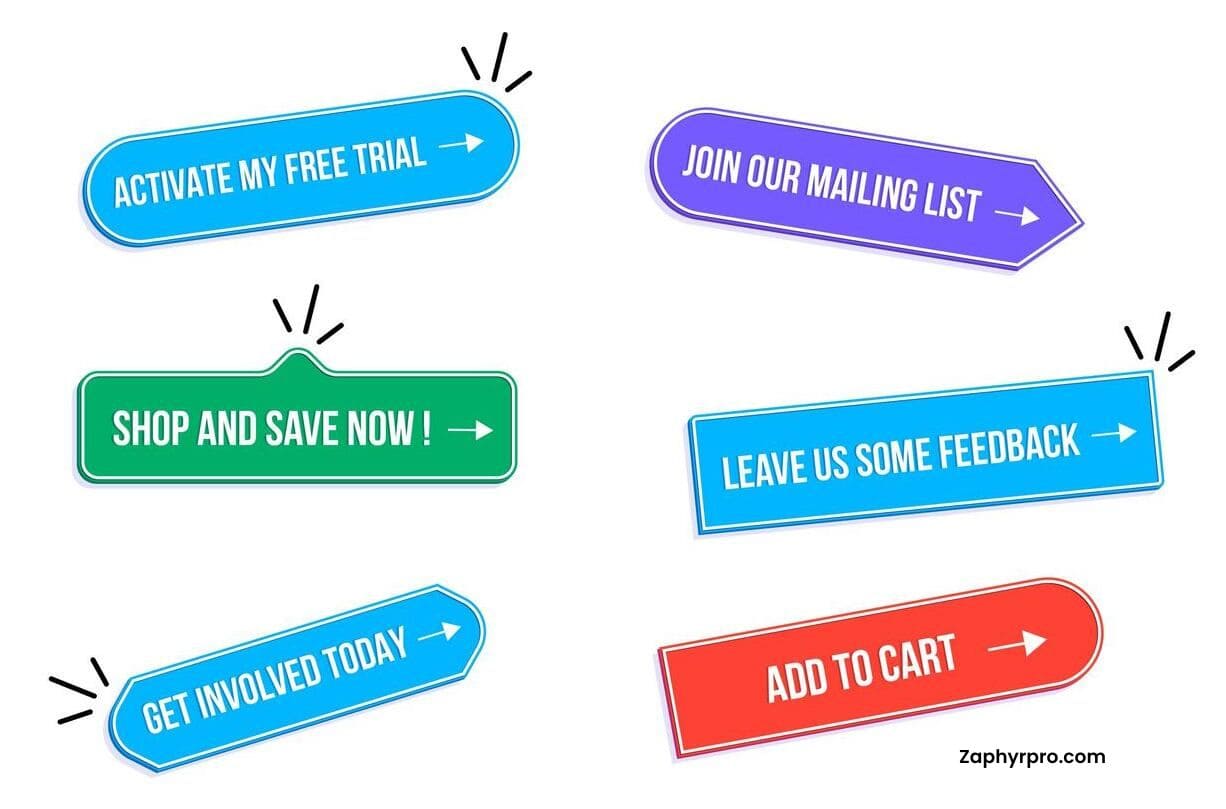
Next, follow up faster than you think you need to. According to Drift, if you wait more than five minutes to respond to a lead, your chances of qualifying them drop by 10x. That’s huge. Don’t wait three days. Reach out within an hour, or at the very least, within 24 hours.
Also, give them a reason to act right now. Instead of just saying “Talk to sales,” focus on what they get, something like “Get your custom audit” or “See exactly how we’d improve your workflow.”
2. They downloaded your free guide… and disappeared
You created a valuable lead magnet. Someone downloaded it. Then nothing. No clicks, no replies, no follow-up engagement. This is where most businesses stop, but this is exactly where the real work should begin.
To bring those leads back to life, send a short, clear “next step” email right after the download.
This message should be helpful, not salesy, more like, “Here’s what to do next,” or “Want help putting this into action?”
Then, offer something extra. That could be a quick video walkthrough of the guide, a quiz that ties into the topic, or a companion checklist. It adds value and keeps them engaged.
Crucially, connect the dots. Don’t just say, “Hope you enjoyed it.” Instead, explain how the guide helps them solve a real-world problem they care about. For example, if your guide is about writing better cold emails, point out how following the steps could lead to 2x more replies next week.
3. Not enough people are entering your funnel
Sometimes the problem is that not enough people are seeing it. Your setup might be great, but without top-of-funnel traffic, it doesn’t matter. You can’t convert leads that never show up. This is often a visibility issue, not a funnel flaw.
To fix it, start by creating content that answers real questions your ideal customers are already searching for.
Use tools like Google’s “People Also Ask,” autocomplete suggestions, or keyword research tools to discover what topics matter most to your audience. Then create helpful, relevant blog posts, videos, or resources around those topics.
Next, amplify your reach with ads. LinkedIn, Google Ads, and Meta are all great platforms to reach people, but make sure your ads speak to the pain points your audience cares about, not just your product features. People click on solutions, not specs.
Also, don’t let your best content collect dust. Look back at old blog posts or videos that performed well, update them with fresh insights, better CTAs, and a modern look, and then republish and promote them.
HubSpot also found that updating old content can increase traffic by over 100% on average.
4. People stop noticing your buttons and ads
If you’ve been using the same “Download now” button over and over, chances are your audience has stopped paying attention.
This is called CTA fatigue or ad blindness, and it’s more common than you think. When people keep seeing the same message in the same way, they start to ignore it automatically.
To fix it, start by changing your CTA language. Instead of “Schedule a call,” try something fresher and more inviting like “Let’s chat” or “Get your game plan.” You should also experiment with placement.
Move your CTA higher on the page, make it larger, or try a new color that stands out from the rest of your design.
Most importantly, focus your CTA on the outcome, not the action. Instead of saying “Download our guide,” say “See how to save 10 hours a week.” That speaks directly to the value your audience wants.
How to Improve Your Funnel Over Time
A strong funnel isn’t something you set and forget. It’s something you tune and optimize over time. The best-performing funnels evolve based on what your audience actually does, not just what you expect.
Here are four key ways to make your funnel better, smarter, and more effective as you grow:
1. A/B Test Your Pages and Emails
Small changes can lead to big improvements. By A/B testing, you can compare two versions of a landing page or email to see which one performs better. This might mean testing different headlines, CTA buttons, images, or email subject lines.
2. Use Analytics to Spot Drop-Off Points
Analytics show you where people are leaving your funnel. Are they clicking your ad but not filling out the form? Are they downloading a guide but never opening your follow-up email?
Use tools like Google Analytics, Hotjar or your CRM’s funnel reports to spot where leads are getting stuck. Once you know the weak points, you can fix them with better messaging, clearer CTAs, or simpler forms.
3. Update Content Based on Buyer Behavior
Buyer needs change — and your funnel should change with them. Pay attention to how people interact with your content. Which emails get opened? Which blog posts keep getting traffic? Which webinars do people finish?
Use those insights to update your funnel. Refresh outdated resources, rework messaging that no longer resonates, and focus on formats your audience prefers (like short videos instead of long PDFs). This keeps your content relevant, and keeps leads moving.
4. Integrate Keywords into Every Funnel Stage
Great funnels also help your audience find you. Start with keywords your audience searches for, like “inbound marketing funnel” at the top of the funnel, and “lower funnel marketing” when they’re closer to buying.
Use those terms in your blog posts, landing pages, emails, and even button copy. This helps with SEO, connects your message to real search intent, and brings more qualified traffic into your funnel, right when they’re looking for what you offer.
Wrapping Up
If you’ve made it this far, you now have a real-world playbook for building a marketing funnel that doesn’t just look good on paper.
We’ve walked through the full process:
- How to understand your audience before you build anything
- The 5 key stages of a funnel (and what each one needs)
- Real examples from service and product-based businesses
- Fixes for common funnel issues that derail results
- Simple ways to keep improving over time
There’s no such thing as a “perfect” funnel. There’s only the funnel you improve test by test, click by click until it works better than before.
Want expert help building a high-converting funnel? Book a Strategy Call with our team, we’ll walk you through exactly what’s working, what’s not, and how to fix it fast.
Frequently Asked Questions
You can build a simple marketing funnel for free using tools like Mailchimp (for emails), Google Forms (for lead capture), and Canva (for landing page designs or lead magnets). Start with content that builds awareness, follow up with value-driven emails, and include a clear call-to-action like “Book a free call” or “Download the checklist.”
The five main stages of a sales or marketing funnel are:
- Awareness – when someone first discovers your brand
- Interest – they explore your content and want to know more
- Consideration – they compare you to other solutions
- Intent – they’re close to buying, but need clarity or proof
- Conversion – they take action: book, sign up, or purchase
Each stage needs different messaging and content to guide the prospect forward.
A marketing funnel focuses on attracting and nurturing leads through content, ads, and education. A sales funnel takes over when a lead is ready to make a decision, guiding them through pricing, demos, objections, and closing. Think of marketing as the warm-up and sales as the close.
It usually takes 2 to 4 weeks to build and launch a fully functional funnel, depending on how much content you already have. Funnels that involve custom assets, multiple touchpoints, or complex integrations may take longer — but you can get a basic one live within a few days if you keep it lean and focused.
Top tools for building funnels include:
ZaphyrAI – great for outbound strategy, automation, and lead conversion
HubSpot – CRM + marketing automation
ClickFunnels – drag-and-drop builder for landing pages
ActiveCampaign – behavior-based email automation
GA4 + Hotjar – track what’s working and where users drop off
The right tool depends on your goals, team size, and whether your focus is inbound or outbound.




